Succulent plants are everywhere. With a wide range of colors, shapes and sizes—and renowned drought tolerance—these fleshy-leaved plants are growing in popularity. Here are 14 ways to use them in your garden or outdoor space.
15 Tips for Planting Succulents Outdoors
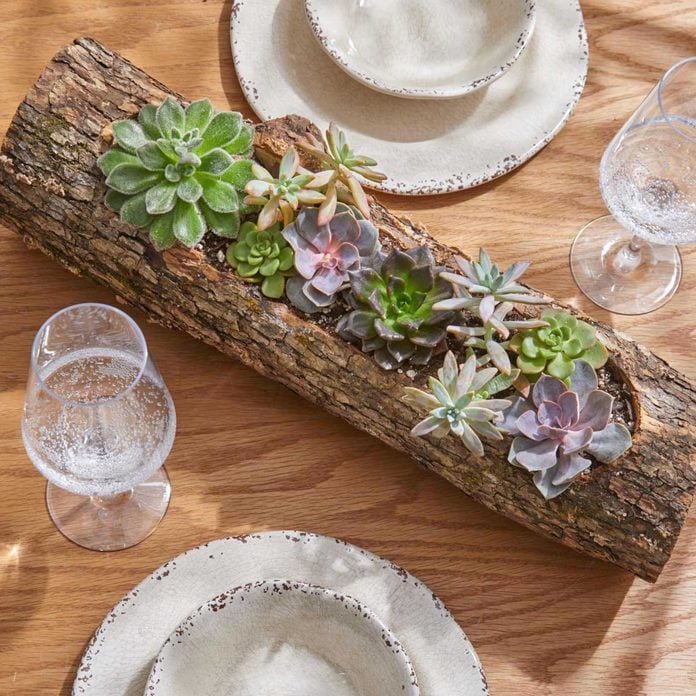
DIY Succulent Planter
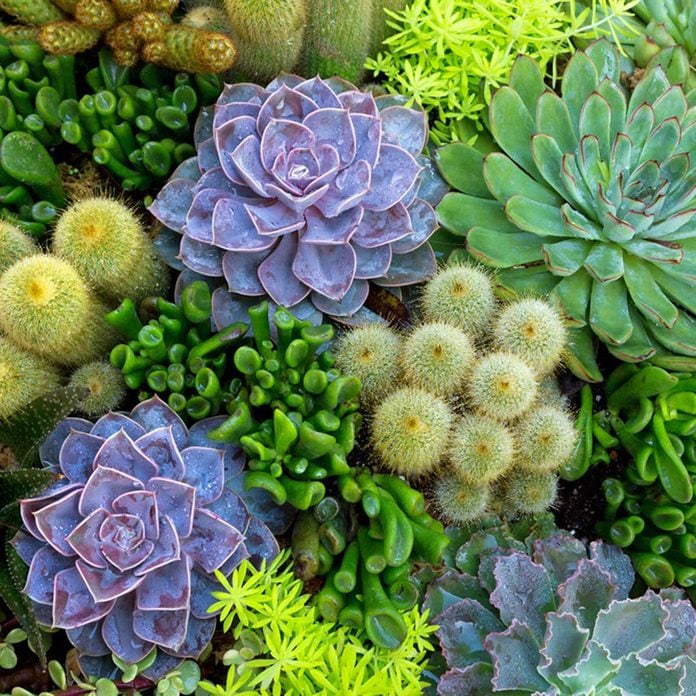
Make a Mosaic
With so many colors, shapes and sizes, succulent plants are tailor-made for mixing and matching into any design you like. Create a mosaic with lasting interest with outdoor succulent plants. You can even throw in a few miniature cactus plants—which prefer the same growing conditions—for extra texture.
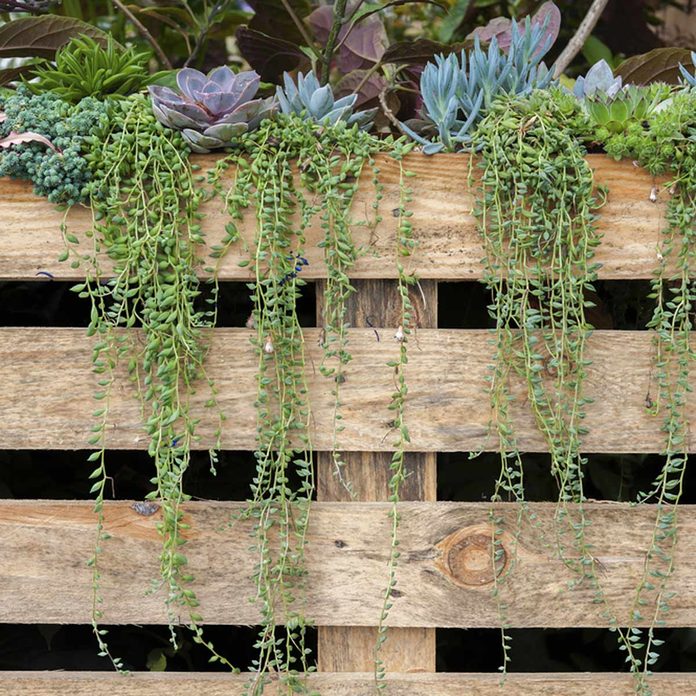
Decorate a Fence
Top a fence or wall with planter boxes and let succulent plants grow upward and trail downward to soften the structure and add visual interest where it was lacking before. The drought-tolerant outdoor succulent plants won’t need to be watered constantly, as other garden plants would.
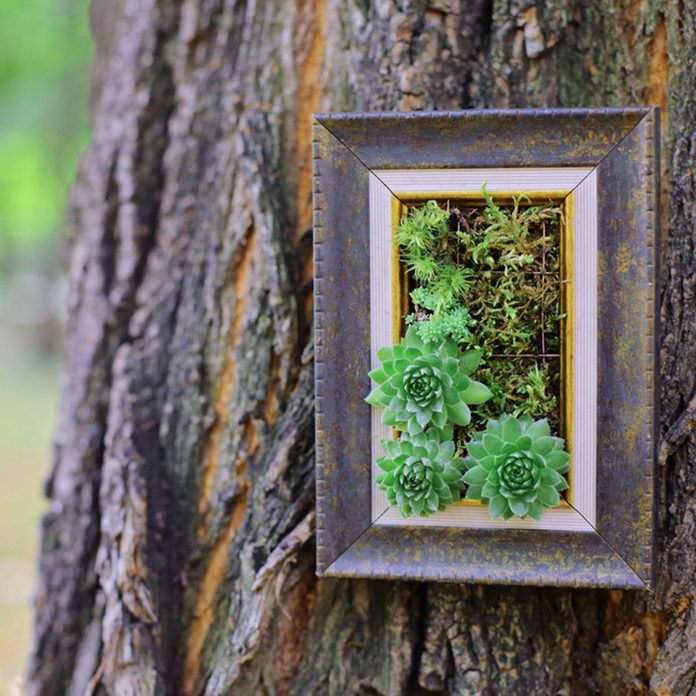
Create a Piece of Art
With their small size and camel-like appetite for water, miniature outdoor succulent plants are perfect for planting in a slotted tray, surrounded with a picture frame, and mounted on a tree, wall, fence or other structure. Remove once a week, lay flat, and water well before hanging it back in place.
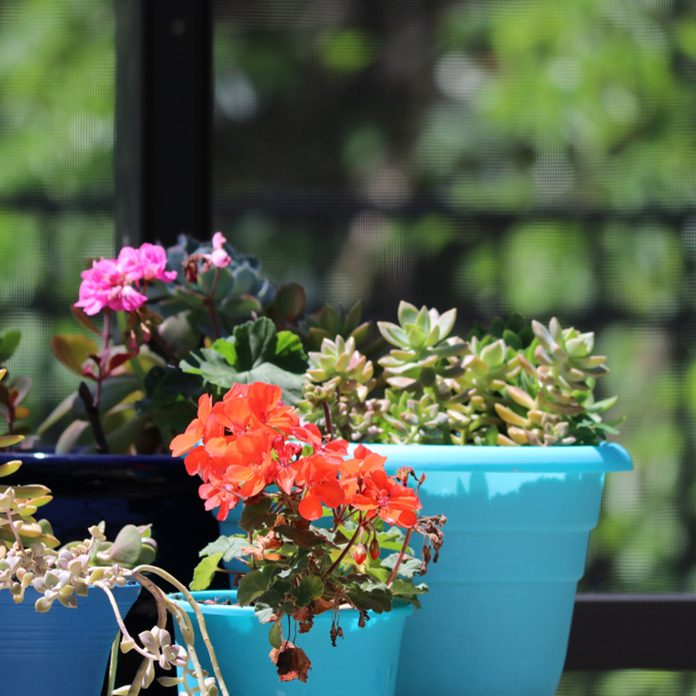
Arrange a Potted Vignette
Succulent plants do great in containers. Sometimes, though, they are too small to carry enough visual interest from a distance. That’s when it pays to group outdoor succulent plants in color-coordinated pots (so they look like one unit). Repeat the colors and echo with a darker hue if you wish. Also, mix up the heights and sizes for more interest.
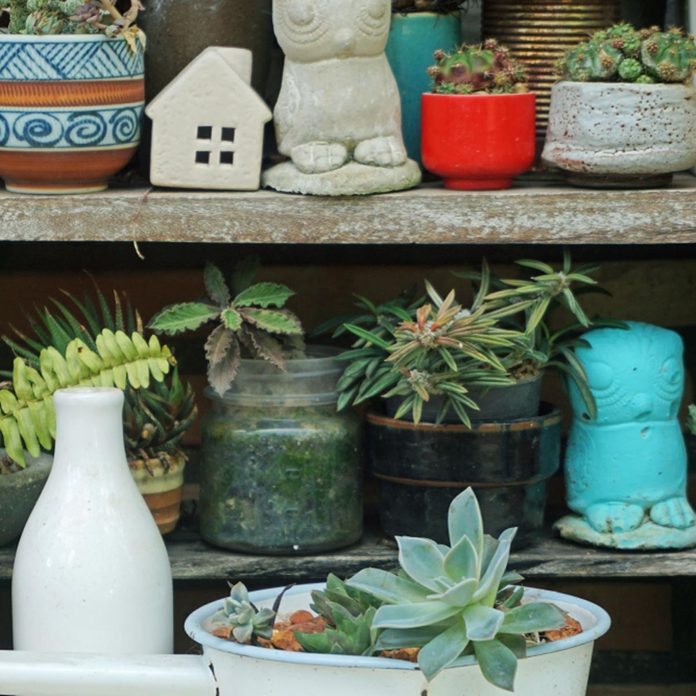
Group With Found Objects
Succulent plants (and cacti) can be planted in just about any container. It can be fun to come up with creative uses for old items such as pots and pans. You can group together related objects (in this case, kitchen items), then display them on multiple levels for more eye appeal.
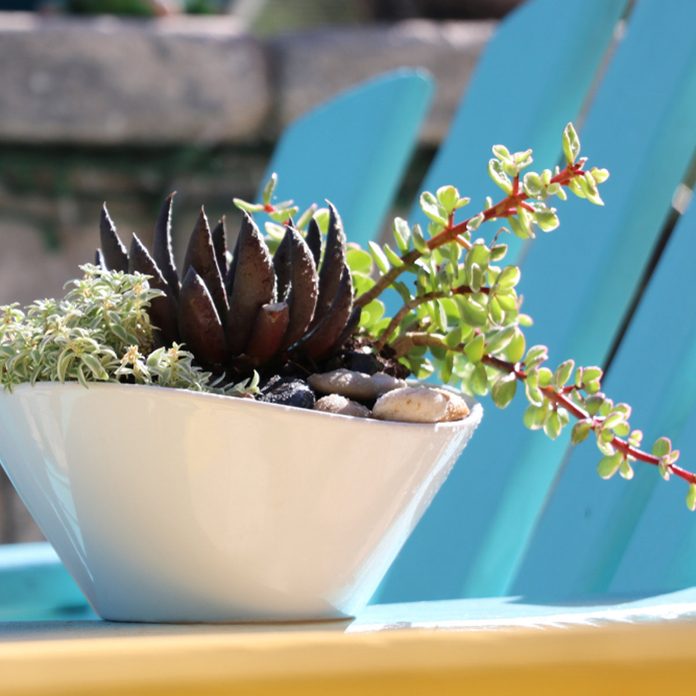
Go Solo
With a handsome container and a simple backdrop, succulents can shine on their own. The secret is to use the thriller-filler-spiller approach. The thriller, or hero plant, grows upward and often has contrasting color or shape. The filler, as the name suggests, fills in around the hero. And the spiller is a trailing plant that hangs down, completing the vignette. This design strategy works with all plants, not just succulents. Keep your succulent healthy so that it looks its best.

Plant a Groundcover
Outdoor succulent plants make outstanding, drought-tolerant ground covers. And when you pick a real cutie like ‘Angelina’ sedum (seen here changing color from its traditional lime green), you’ve got a ground cover that not only saves maintenance, it adds dimension and color to the landscape as well.
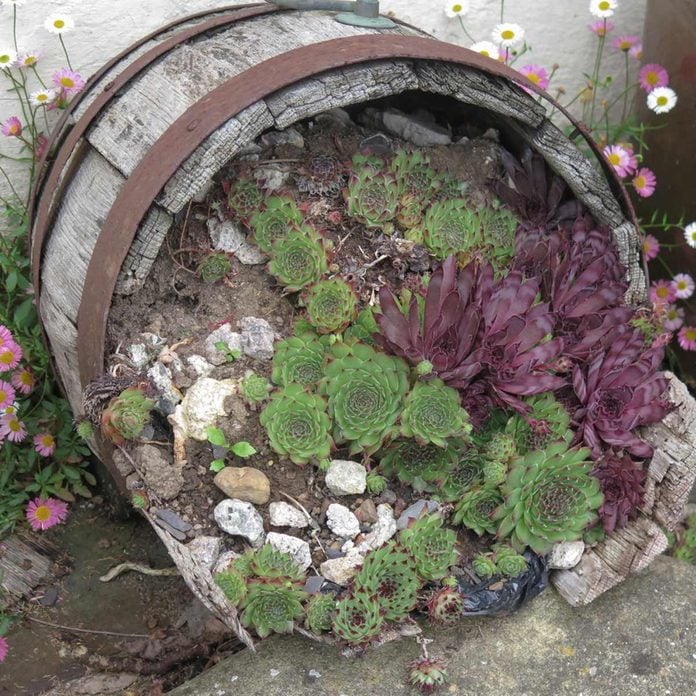
Roll Out the Barrel
Got an old whiskey or wine half-barrel? Repurpose it as a garden container. Turn it on its side, pack a lightweight soil mix in place, and finish it off with succulent plants such as hens-and-chicks (Sempervivum spp.). Voila! A rustic relic that can’t help but call attention to itself—albeit in a wonderfully charming way.
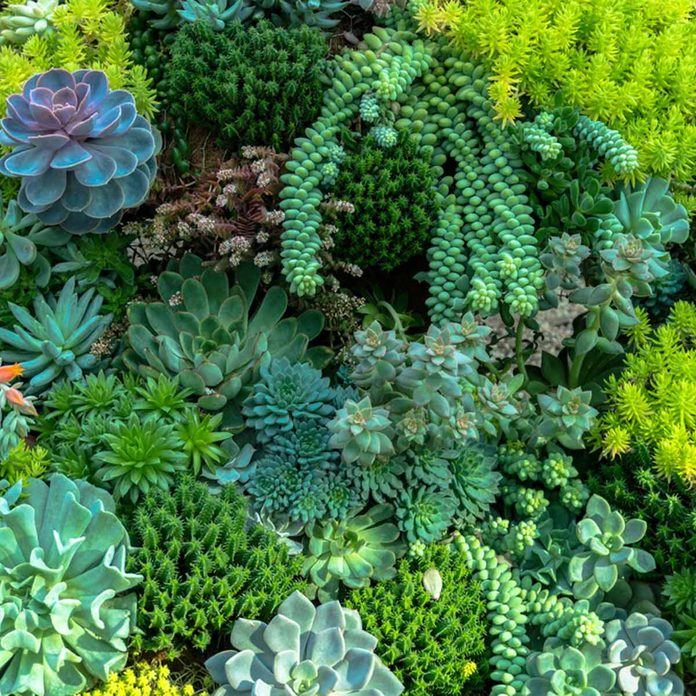
Mix it Up in a Mini Garden
Create a miniature garden with outdoor succulent plants that can be enjoyed up close. A miniature garden is small enough to be portable, so you can move it wherever you want. Maybe it’s a centerpiece for your next outdoor party, then later it’s sitting on the floor in the porch. Plus, with a miniature garden, you can take it indoors to a bright, sunny location if cold weather is on the way.
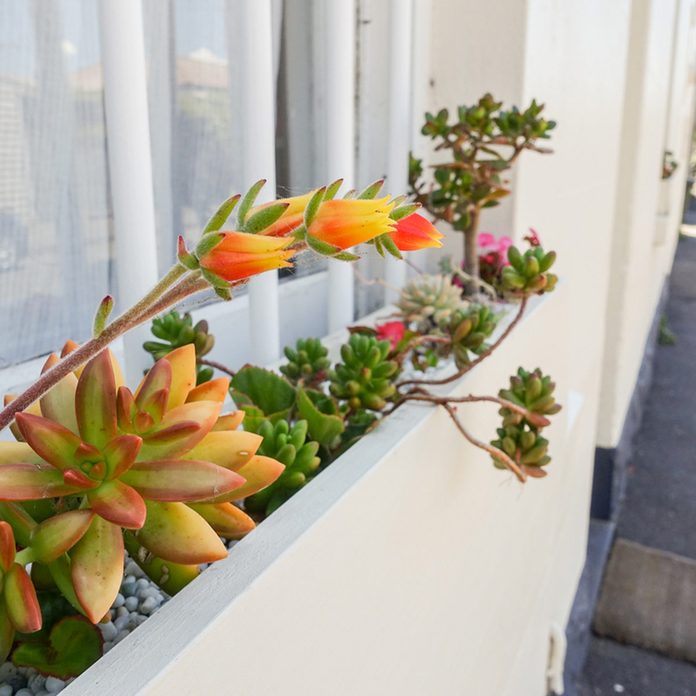
Fill a Worry-Free Window Box
Ever forget to water your window box garden? Sure, we’ve all been there. And we’ve all paid the price with dead—or at least mightily struggling—plants. Outdoor succulent plants to the rescue! They can go a week or more between waterings, so they’ll still look fresh if irrigation goes irregular for a spell.
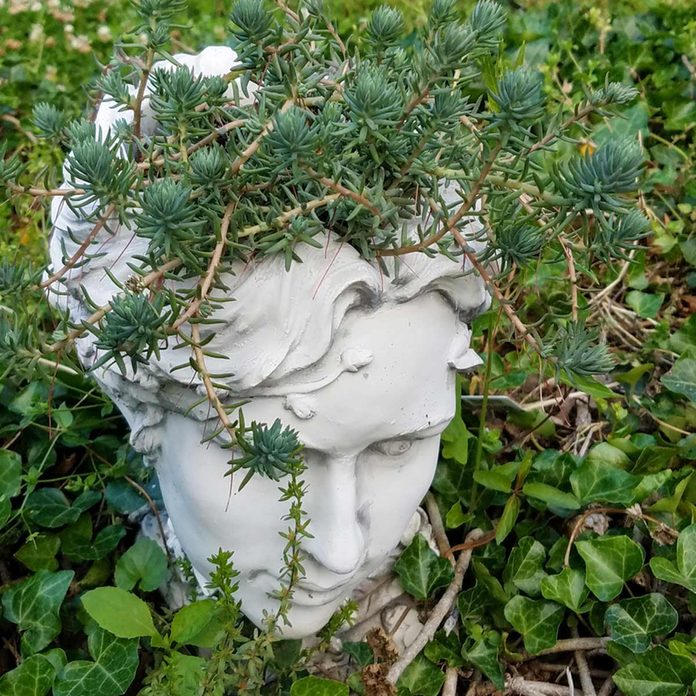
Whip Up Some Whimsy
Let your creative flag fly. Introduce a little garden whimsy to your landscape. This head planter, set in a bed of ivy, features a hairdo of trailing sedum lending a distinctive air of Greek mythology to the setting. This is one Medusa no one’s afraid to look at.
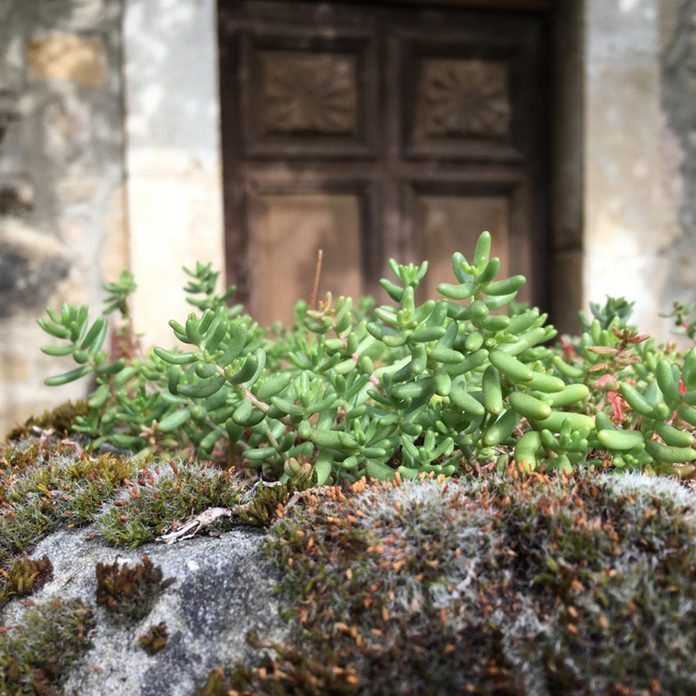
Rock On With a Rock Garden
Succulent plants should be a part of every rock garden—if not the main attraction itself. They’re naturally adapted to the hot, sunny conditions and the lean soil of traditional rock gardens. Many are mat-forming, allowing them to spill over rocks, while others are masters at filling small pockets.
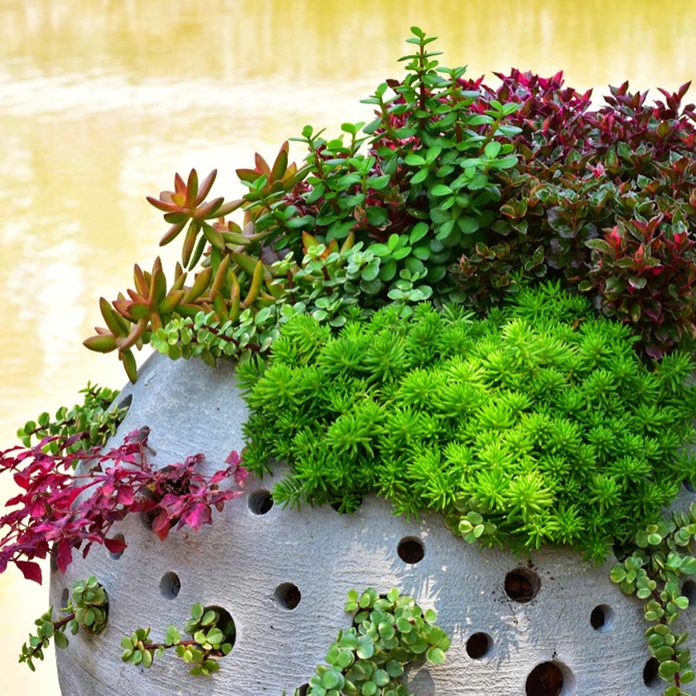
Have a Ball
Go spherical. In this case, a precast concrete sphere has been drilled with holes of various sizes and filled with potting mix and an assortment of succulent plants. You could also do this with a used bowling ball or globe from the thrift store. Now there’s a conversation piece! It’s a great way to decorate with cactus or succulents.
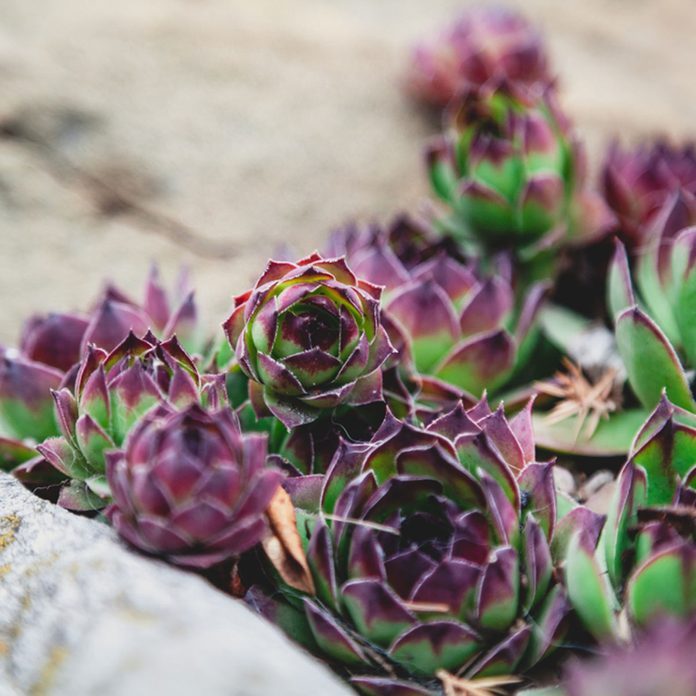
Fill in the Blanks
Everyone has that oddball spot in the yard—usually by the edge of a patio, driveway or sidewalk—where it seems impossible to find something suitable to grow. And who wants to have to water that small pocket garden anyhow? Outdoor succulent plants like echeveria and sempervivum are perfect for filling these crevice spaces. And they won’t need constant watering either. Try this hack to clone succulents.